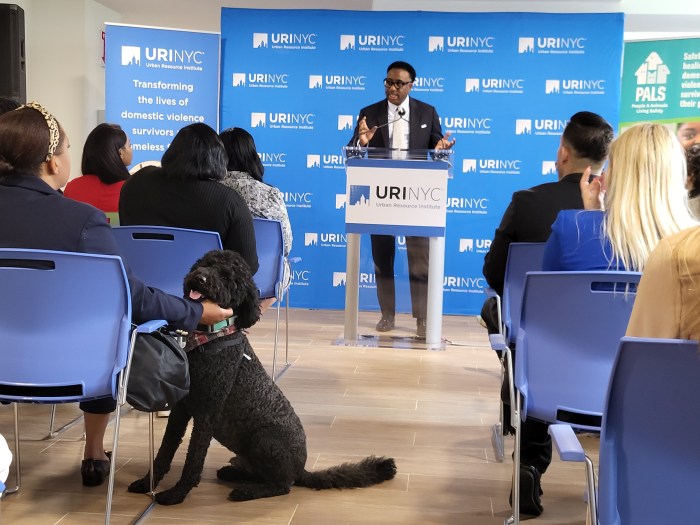Performers with guitars, upside-down buckets or their own voice are allowed to try their luck and make a living within the subway system.
It’s another example of a non-riding activity that is, in fact, allowed on the subway (see also: swiping strangers through the turnstile).
Artists of all sorts can ply their trade and accept donations on subway platforms and promenades, as long as they follow the transit system’s rules of conduct. Those rules ban the obstruction of movement, performances within subway cars, use of amplification devices, and excess noise, among other small provisions.
But the MTA also sanctions select performers as part of its Music Under New York program, which allows some 350 vetted individuals to schedule gigs at approximately 30 prime locations from Times Square and 14th Street to Yankee Stadium and Atlantic Avenue.
These spots are often relatively open spaces where viewers can congregate, observe, enjoy, drop a dollar as donation or buy a CD. And performers can reserve their spots without fear of competition from other acts, or attention from the police.
A preview of new additions to the sanctioned soundscape was available at final auditions on Wednesday in Grand Central Station, with nearly 70 finalists signed up in genres from jazz to Afro-fusion, flamenco to Turkish classical.
What makes a good act?
Facing three rows of judges in the cavernous Pershing Square entrance to Grand Central Terminal, the performers had just a few minutes to grab attention.
The judges, including professional musicians and MTA staff, had been instructed to look for “quality” and “variety,” but also “appropriateness” and “volume” — even the sanctioned few aren’t supposed to be disruptive.
Rawl Lashley, 44, a steel pan player who performs under the name City Jammers, had tried playing in the subway a few times, but each time police officers shut down the show because of his accompanying track, played through an amplifier. The police suggested that he try out for Music Under New York, and he did, hoping to avoid law enforcement attention. (The amplifier could still present problems).
Though he says he’d been playing since childhood — including in a 56-piece drum band in his native Guyana — he only took it up again as a main profession recently, when the carpentry and construction work he used to rely on dried up.
He and his family used to live in Flatbush, but his wife and kids moved to Texas for work and to be with family. Lashley says he travels back and forth, and performs with his wife and daughter at weddings and parties when there.
He has good memories of New York — he met his wife on the subway. He says he’s playing full time now to support himself, and hopes the MTA gig would bring steady money. Still, he sees himself in Texas with his family eventually.
“They’re not coming back here. It’s too hard in Brooklyn.”
Trying to get the gig
About 20 winning performers will be announced sometime next month and join the rest of the program’s artists.
Henry Johnson, another hopeful performer, warmed up under Herald Square Wednesday afternoon. A lanky saxophonist with two gold-colored rings matching his instrument, Johnson played a soulful, eyes-closed version of Whitney Houston’s cover of “I Will Always Love You.”
Set up comfortably by the uptown B-D-F-M escalator with a camp chair and clear bucket for tips, Johnson, 60, drew a constant if small audience, smartphones clutched along with Starbucks cups, capturing the performance they’d stumbled upon.
When the song ended, and the crowd had applauded and disbursed, Johnson checked the time to make sure he was in good shape for his 2:45 audition. He double-checked the address and time-slot on the much-creased letter he’d received from MTA Arts & Design.
Though he says he’s been playing “for years,” and had applied to be in the program multiple times, this is the first time he got to the final audition. More money would be a good thing — since he stopped working as a building super and his mother died at 98, he says he’s been living in a shelter in Rockaway. He says he makes $50 to $75 a day playing around the city. If he gets the Music Under New York gig, maybe more.
“I’ve been backing up,” he says, of past work in bands. “Now I’m trying to back me.”
Carefully closing his sax case, he packs up his belongings to head to Grand Central.
This is amExpress, the conversation starter for New Yorkers. Subscribe at amny.com/amexpress.

















